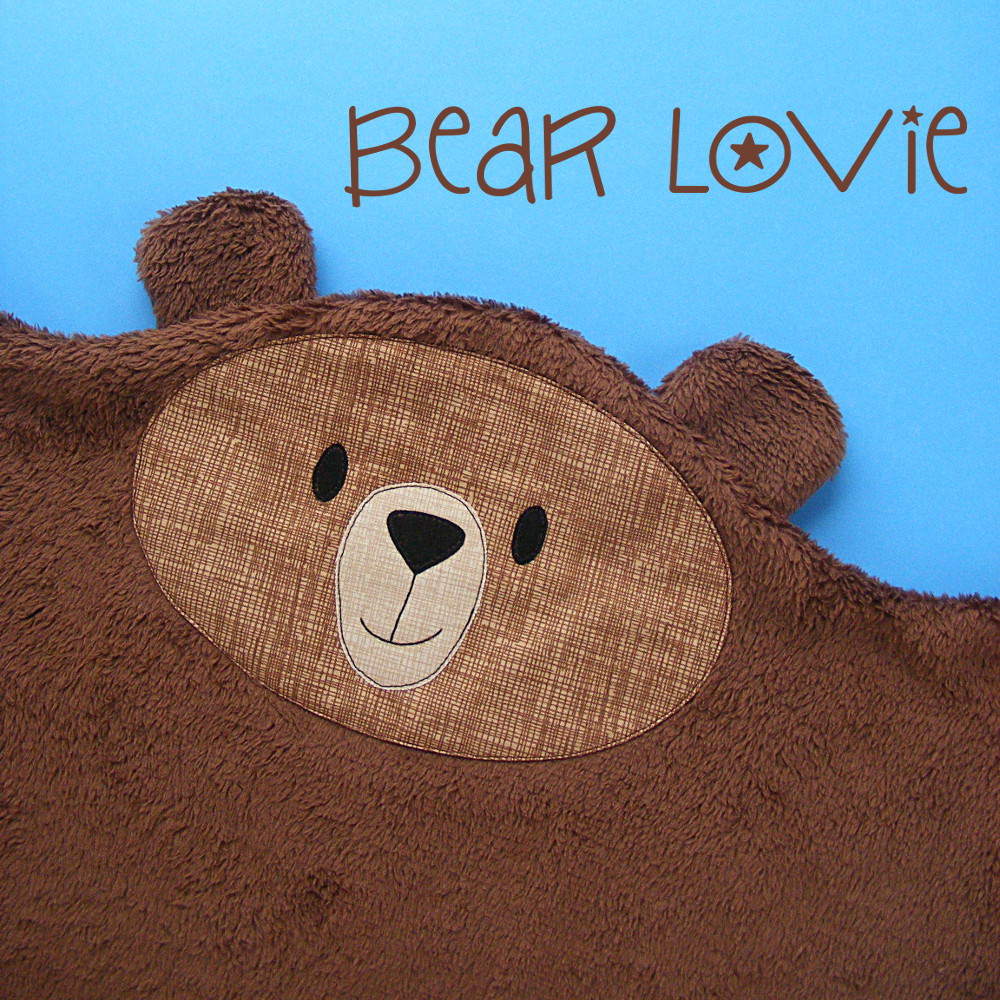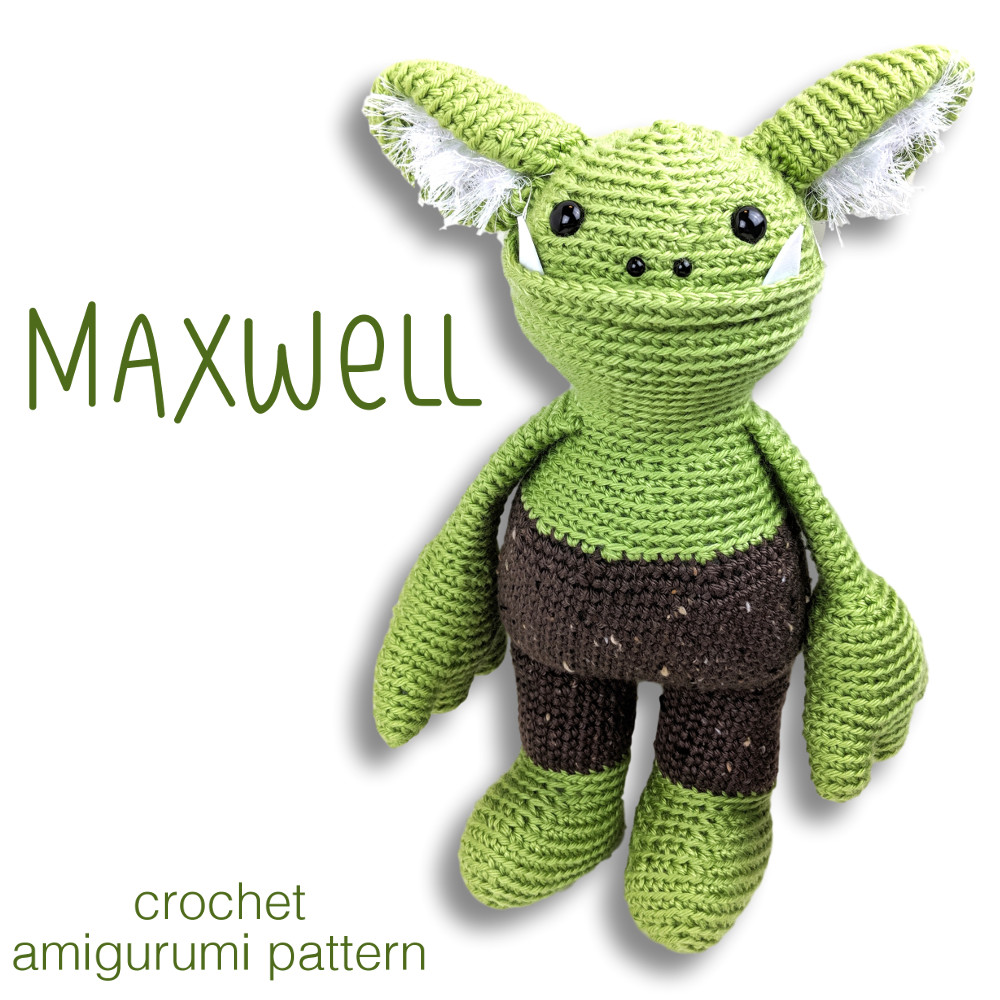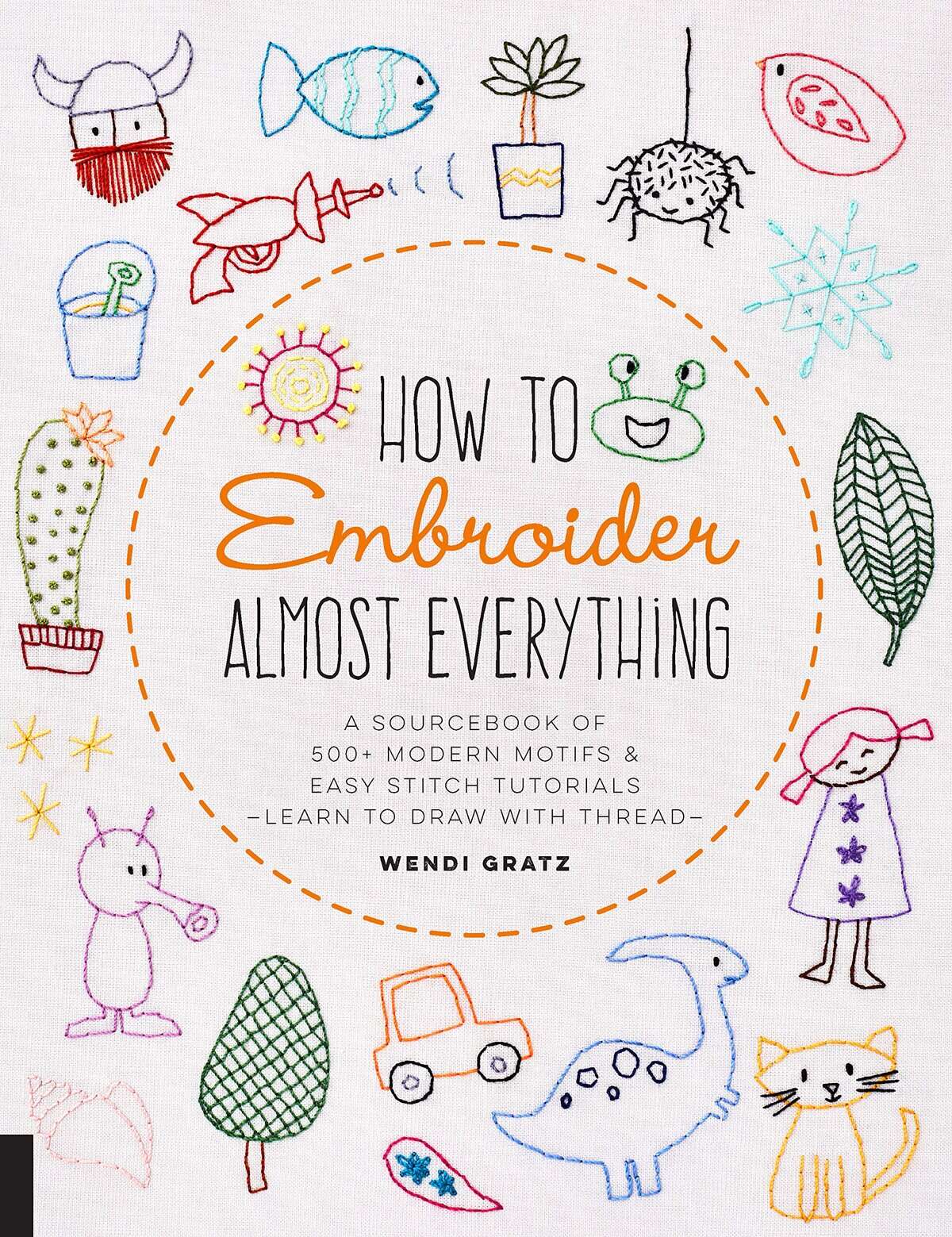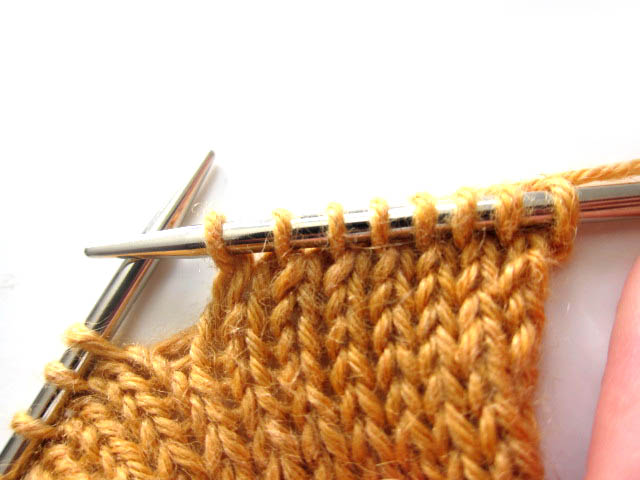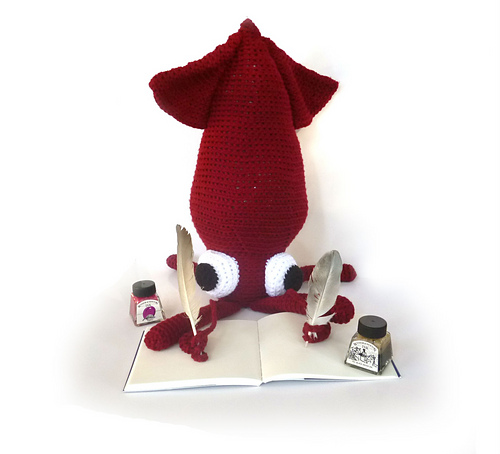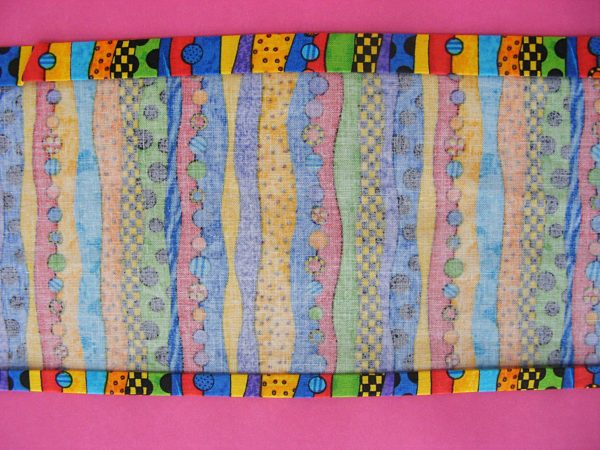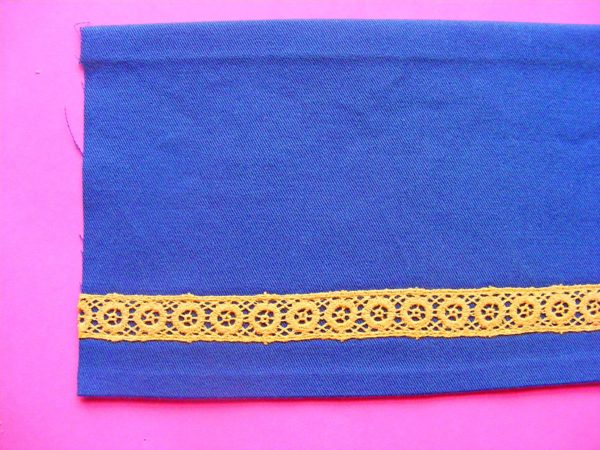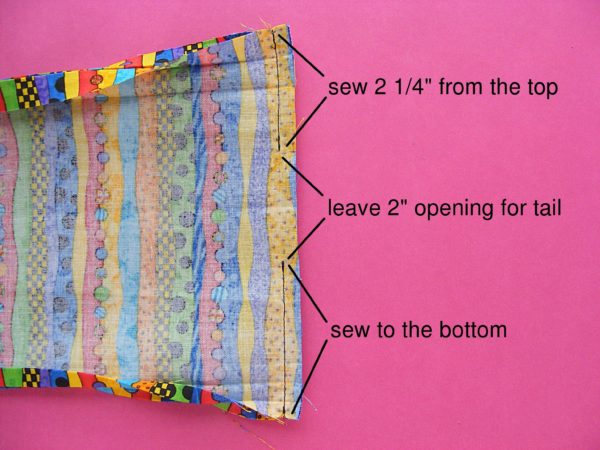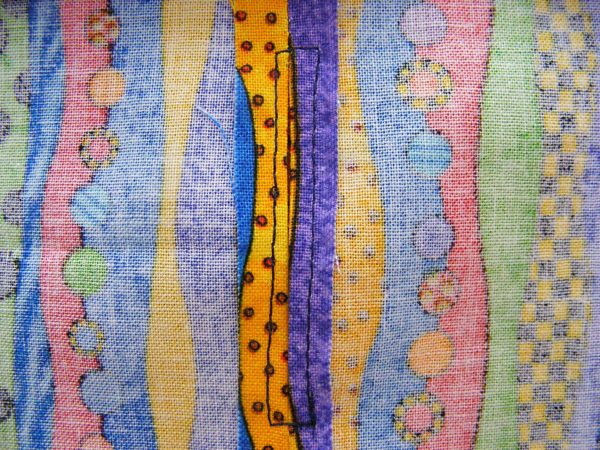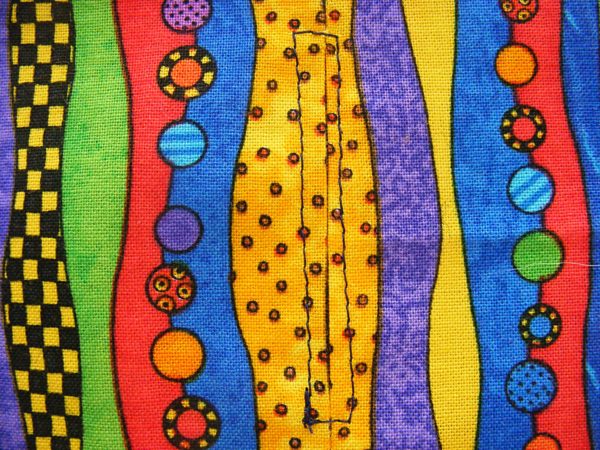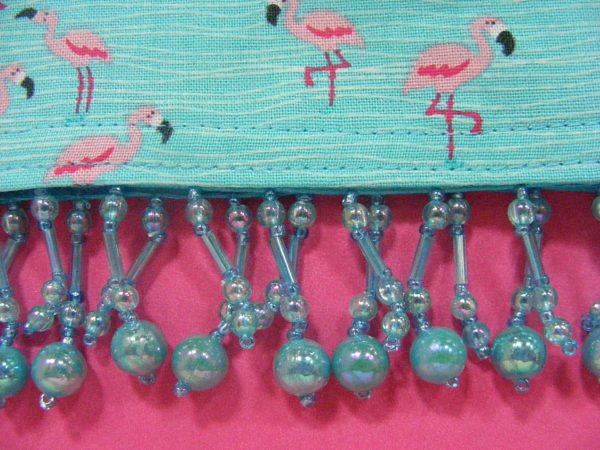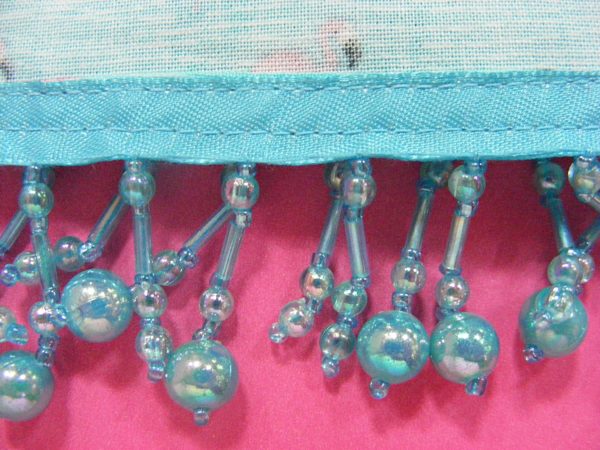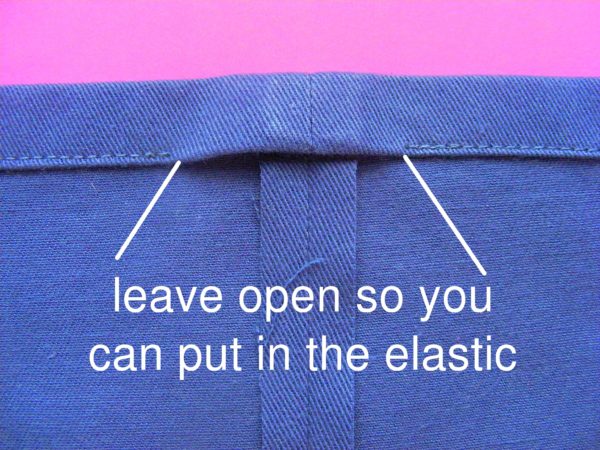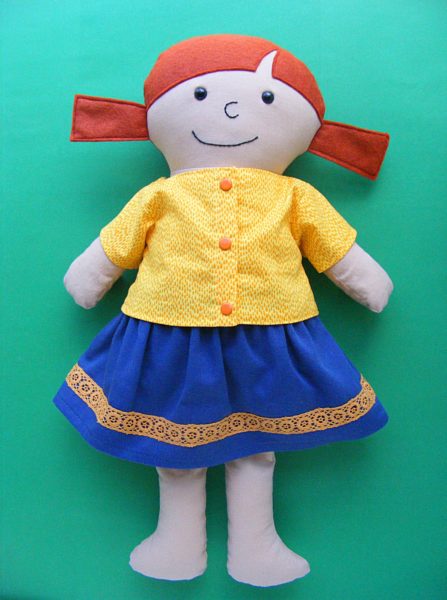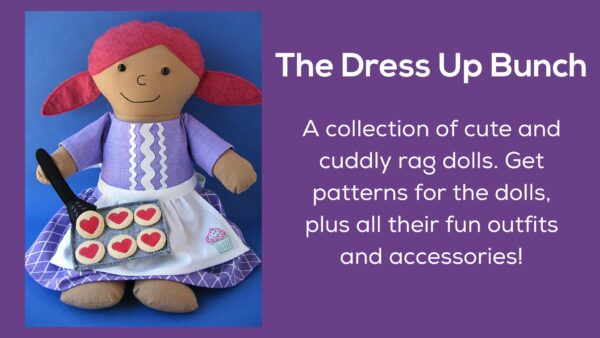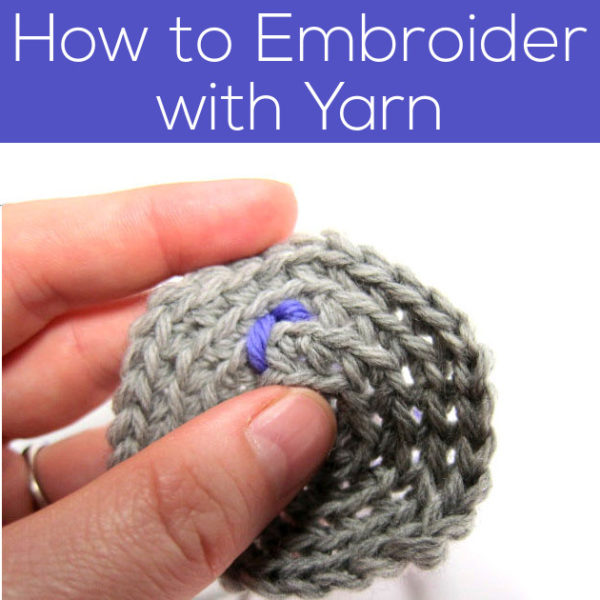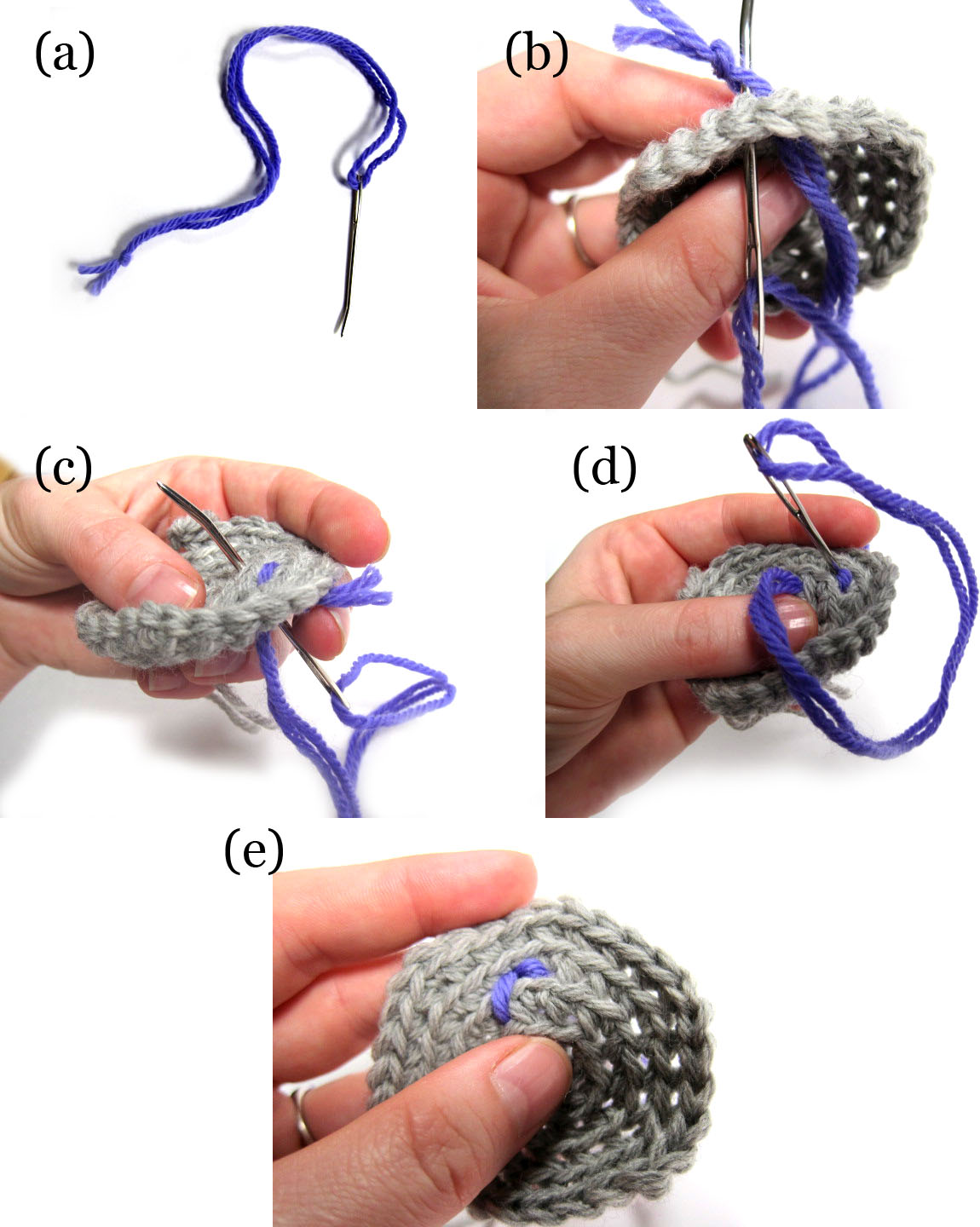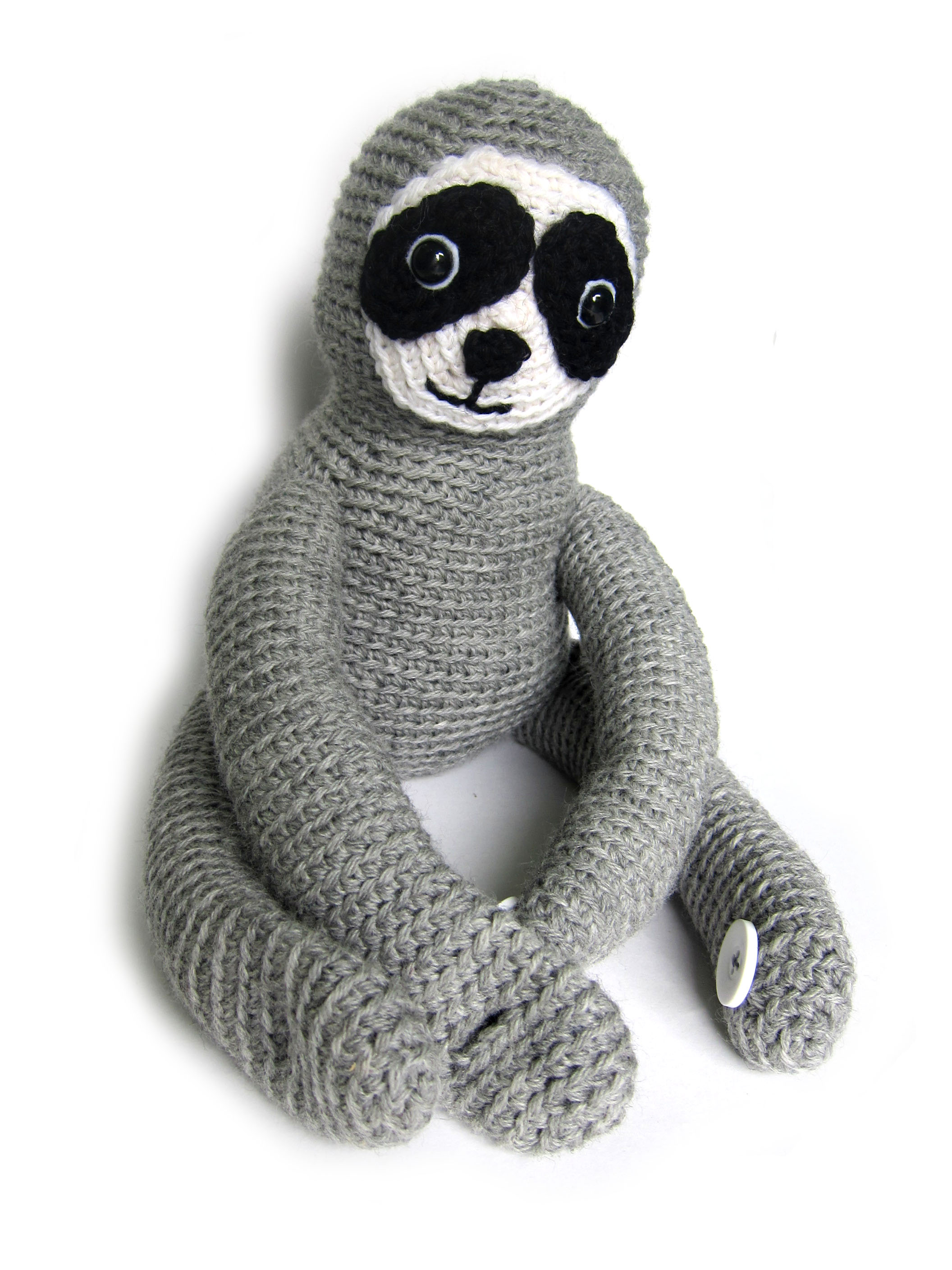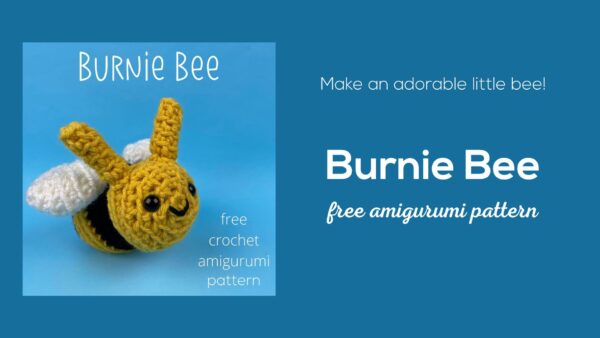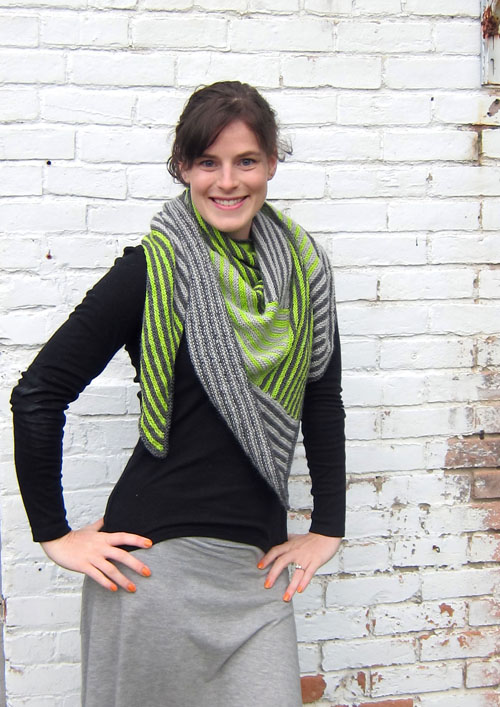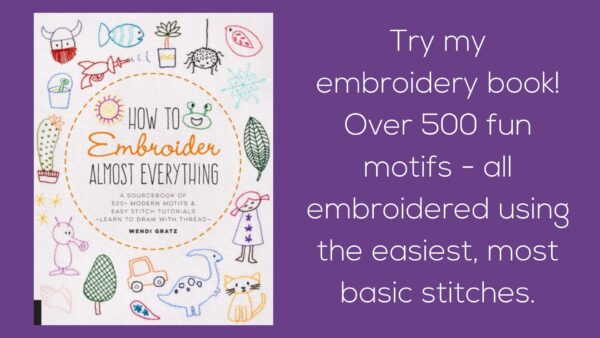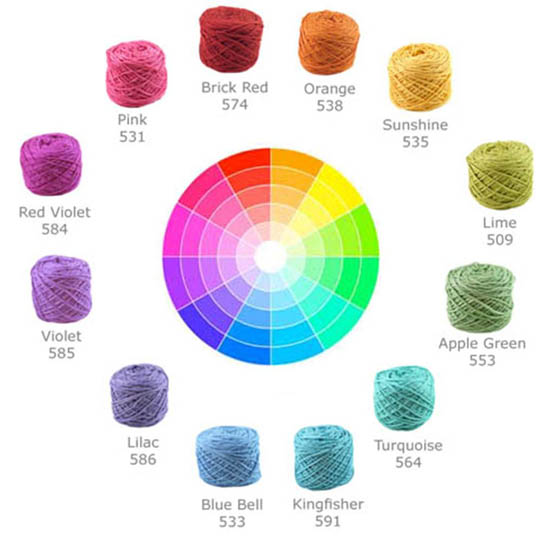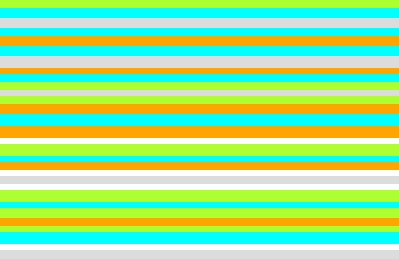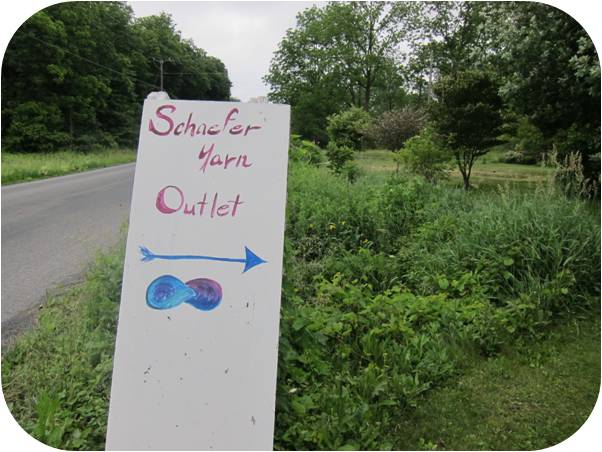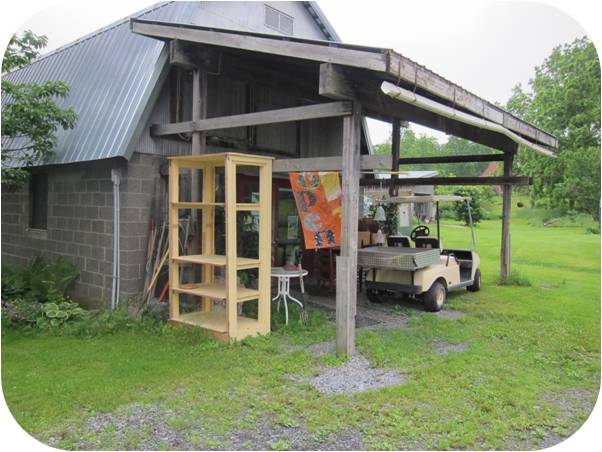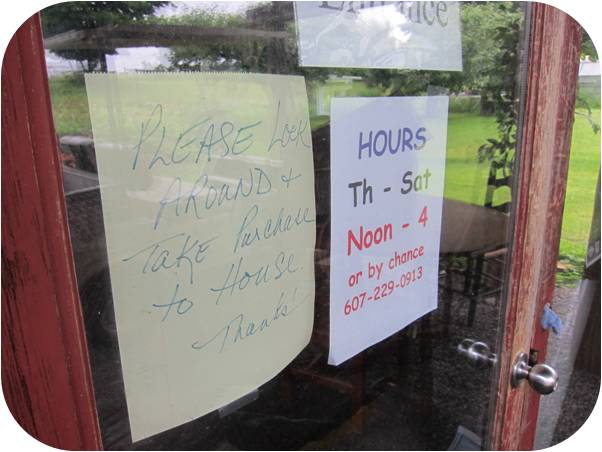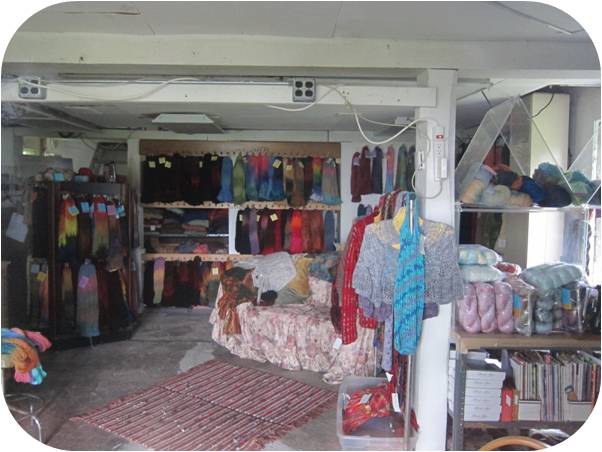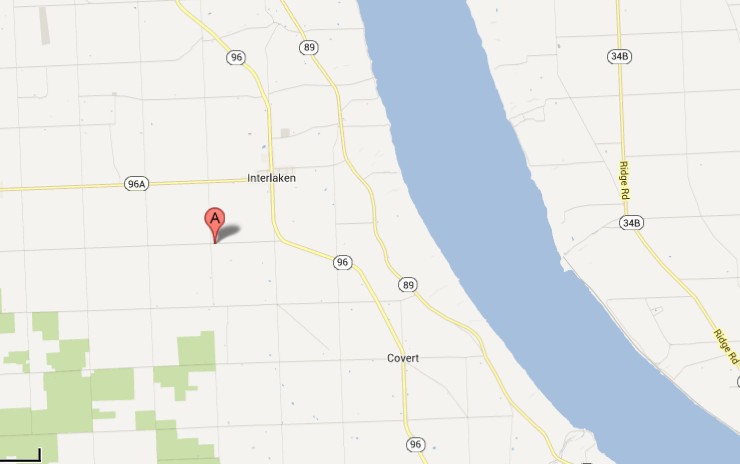 Today’s post is part of the Let’s Talk Process Blog Hop! Eight different designers are each choosing a recent project and talking about the process of designing that project. Our approaches are all likely to be really different – and all inspiring! I love peeking behind the scenes at the process that goes into a finished design – and I always come away with some ideas I apply to my own work.
Today’s post is part of the Let’s Talk Process Blog Hop! Eight different designers are each choosing a recent project and talking about the process of designing that project. Our approaches are all likely to be really different – and all inspiring! I love peeking behind the scenes at the process that goes into a finished design – and I always come away with some ideas I apply to my own work.
I’ll be writing about the new Dress Up Bunch rag dolls. Years ago – back when Shiny Happy World was about selling finished dolls and softies instead of patterns – I had the idea to design a dressable rag doll. I already had a rag doll that sold well, but I wanted one that was designed to be easier to dress, with a large wardrobe of possible clothing patterns. It wouldn’t hurt if she was easier (and faster) to make, too. 🙂
That idea sat on the back burner for a long time while I transitioned to selling patterns and teaching, but a few months ago I finally got serious and designed what would become The Dress Up Bunch.
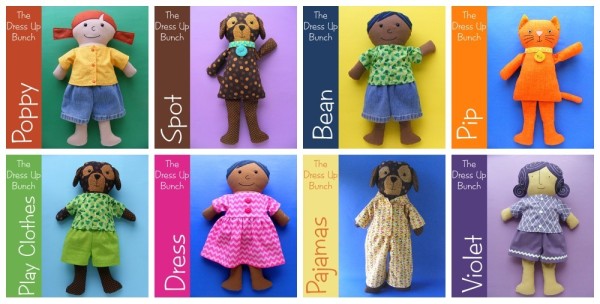
The Dress Up Bunch – so far
I had a LOT of time to think about what I wanted from this pattern collection.
- Very easy to make.
- Arms and legs that would go in any direction for easy dressing.
- Cute, playable and fun.
Any time you design something, even something simple (especially something simple) there are countless small decisions to make along the way.
In many cases there are several good options – but one is the best choice for that particular project. I like to start with a list like this that I can use as a reminder to keep myself on track.
The Old Rag Doll Pattern

Usually I start with a blank page – but this time I had a successful rag doll pattern that I could use as a jumping off point.
This is Abigail Darcy. I think she’s adorable and the pattern had been a strong seller for me. I love her gangly coltishness, her subtle asymmetry, her cartoony face, her striped tights, her changeable skirt.
But she’s not Very Easy to Make.
She’s more of an advanced beginner pattern and I wanted something that would also work for people who are still getting acquainted with their sewing machines.
The way her arms are attached also greatly limits their movement – making her harder to dress and play with.
Very Easy to Make
The number one problem I see with handmade softies is that people don’t put enough stuffing in them. On some designs it doesn’t really matter, but with dolls it can matter quite a lot because less stuffing makes the necks go floppy very quickly. I gave the Dress Up Bunch dolls wider heads, wider bodies – and especially wider necks – so they would be forgiving of being too lightly stuffed.
If you don’t add enough stuffing, this doll still looks good and functions well.
The wider body also solved another problem.
There is a point in the original rag doll pattern where she looks like this.

Her body is so skinny that it won’t hold all the arms and legs and they have to hang out the stuffing hole while sewing up the outside.
It looks worse than it is, but it’s definitely not fun and I want every step of my new pattern to be easy and fun.
The same stage in the Dress Up Bunch rag doll pattern looks like this.

See how neatly (and easily) all the parts fit inside the body?
In addition to making the head, neck and body wider, I also made the arms and legs shorter so they’d fit more easily inside the doll. The arms, in particular, are quite short. In real life a human’s head is much narrower than the shoulders, the neck is much narrower than the head, and hands hang down past the hips.
I decided against anatomical accuracy in favor of a body type that was easier to make.
One more detail you can see in this photo is the center back seam. Most rag doll patterns don’t have that, but I added it for two reasons. One – a stuffing opening in a nice straight seam like this makes the final handsewing a snap. I find it significantly easier than sewing up a seam in the side of the body – especially if that body is well-stuffed. Two – it provides a great seam where makers can easily and securely attach a waggy tail to the animal bodies.
Usually more seams means more complicated, but this is a case where adding a seam actually made the construction easier – in two ways!
Finally – I made the Dress Up Bunch doll pattern symmetrical. I love the casual charm of a little bit of asymmetry, but skin colored fabrics and felt have no easily identifiable front or back. It was very easy for pattern pieces to get flipped over during construction so they didn’t all match up at the end.
For this pattern – where Very Easy to Make was my #1 guideline – I was happy to sacrifice quirky asymmetry for ease of construction.
Super Flexible Arms and Legs

On the old rag doll pattern you can see that her arms are attached at an angle. That’s pretty typical of rag dolls – but it definitely limits the flexibility of those arms. It’s hard to raise them over the doll’s head and the seams have a tendency to tear under the arms. It also makes them hard to dress.
Now look at Pip over there on the left. I left the tops of his arms completely unstuffed and attached them at a right angle to the side of the body. Bingo! Arms that can go in any direction – making for fun play and easy dressing. They don’t look as neat and tidy as the typical angled arm attachment of a rag doll, but they function much better.
Neat and tidy was not on my list. Easy dressing and playing was.
I originally tried sewing elbow and knee joints into the arms and legs (like on the legs of the old rag doll) but my daughter said they looked ugly – like sausages. I tried them unjointed, but very lightly stuffed and with some plastic pellets added to give them good flop. She pronounced that version “very huggable and soft, good for playing, and not ugly.” Success. 🙂
Playability

This was a big one for me. I’ve watched kids play with my dolls for years and I’ve seen how they interact with them. They want to carry them around by the arm (another reason the arms need to be flexible). They want to cuddle them. They want to sit them up and have them stay sitting. They want their arms and legs to bend. And if they have tails – they want to wag them. 🙂
A lot of dressable animal dolls have no tails – or they have applique tails that are covered by the clothing. I wanted actual waggable tails.
It added an extra few steps to the construction of the critter dolls – and their pants – but it adds a ton to the playability. It’s always a balancing act.
In this case I was happy to add a tiny bit of difficulty to the construction in order to have a doll that would be a lot more fun to play with.
The Process is Never Done

The first human doll in The Dress Up Bunch was Violet. Here she is.
I love her purple curls, but when I got ready to make the second doll in the collection I realized that the face still needed some work.
The new, wider body shape was chunky and cute, but she still had the smaller/finer features of the original rag dolls. They didn’t go together.
I played around so much with the face for the second doll!
(I have a whole post here about how I test faces on my prototypes).
I drew and erased and drew and erased and drew and erased until the face was a yucky grey mess. Then I flipped it over and did the same thing with the back of the head.

I had a nose and mouth I liked – but the eyes were killing me. No matter what I did they were too small. I tried pinning on some felt eyes, but I wasn’t happy with any of them. I had used plastic safety eyes for Spot – and I loved them – but I had it stuck in my head that they would look bug-eyed and goofy on a human doll.
Finally – in desperation – I grabbed a seam ripper, poked a hole where the prototype’s eye should go, and stuck in a safety eye to test it out.
The whole face suddenly came to life.

It didn’t look bug-eyed or goofy! The larger size looked friendly and young. And the shiny half-domes had a sparkle to them that I hadn’t gotten with felt eyes. I loved them!
So this is the new face of The Dress Up Bunch.
Try everything – even things you’re pretty sure will fail.
I redesigned Violet so she would have the younger, cuter face that the newer dolls have.
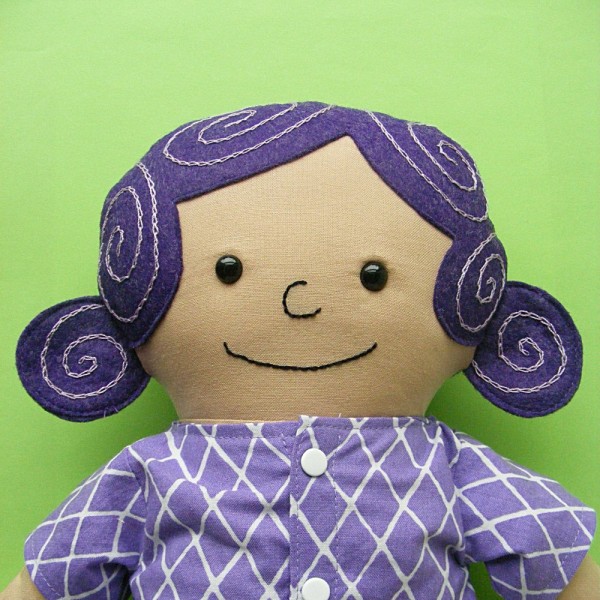
One More Bit of Advice
I do all my prototyping with white muslin.
- It’s cheap and easy to find.
- It’s the least forgiving fabric I could possibly sew with – pieces that could be stretched to fit with fleece will not match up with muslin. I’ll know there’s a problem that needs fixing.
- You can draw and write on it – like I do when I’m designing faces.
- Every mistake will show. My daughter might not have noticed sausage-looking arms on a patterned fabric, but she sure hated them on the white prototype.
If your project looks good in white muslin it will look good in any fabric. 🙂

I hope you enjoyed this look at the design decisions that went into a single project. Ready to see the approaches of some other designers? Take a look at the other posts in today’s hop and gather up enough tips and inspiration to keep you designing for weeks.
Happy stitching!
Best,
Wendi





